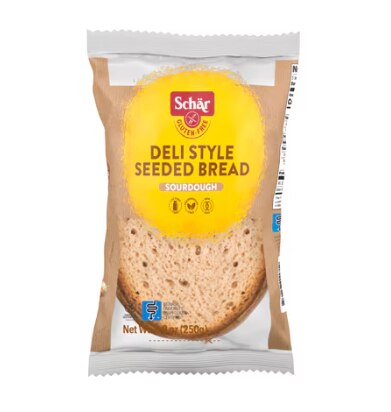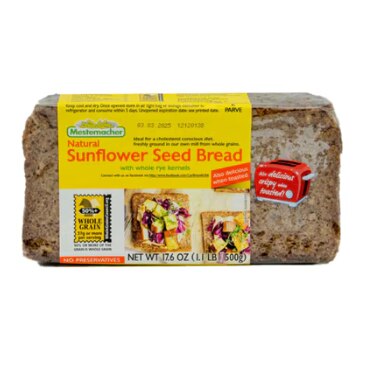Is your morning slice of toast or afternoon sandwich bread making you feel lousy?
Some skeptics have blasted bread as being responsible for a host of negative symptoms. Of course, it’s well-known that gluten in bread can make some people ill, especially if they have celiac disease.
But critics say breads that are highly processed and altered chemically can also make you unwell, including causing you to feel bloated and to experience gas and stomach pain.
Recently, superstar podcaster Joe Rogan made waves when he warned against eating most types of bread available in the U.S., claiming they cause inflammation that makes people feel bad.
Traditionally, nutrition experts have lauded bread as a cornerstone of a healthy diet. But the chorus of critics has raised the question of whether it is time to reduce or eliminate bread from your diet.
How eating bread is good for you
Bread is a low-fat food that provides people with both carbohydrates and some protein, says Nancy Farrell Allen, a Virginia-based registered dietitian nutritionist and founder of Farrell Dietitian Services.
She adds that carbohydrates are the body’s primary source of fuel.
“This means bread provides us with energy, as well as essential nutrients to assist with growth, gut health and a strong immune system,” says Farrell Allen, who is also a spokesperson for the Academy of Nutrition and Dietetics.
Farrell Allen notes that instead of making you sick, eating bread may actually reduce your risk of being diagnosed with diseases such as diabetes, heart disease and cancer.
All grain products in the U.S. – including bread – are enriched with nutrients, Farrell Allen says.
“This is important for public health protection,” she says. “Enriched grains are not inherently ‘bad’ — they help to protect us from diseases.”
Nutrients you may find in bread include:
- Vitamin B1 (thiamin), which helps protect the heart, brain and nerves from abnormalities
- Vitamin B2 (riboflavin), which prevents mouth and throat inflammation
- Vitamin B3 (niacin), which protects against dermatitis, pellagra and diarrhea
- Folic acid, which is important for pregnant women because it helps prevent spina bifida
- Iron, which combats anemia
“Avoiding bread could mean we potentially consume a lower intake of these important nutrients,” Farrell Allen says.
Types of bread to choose – and to avoid — in your diet
Some breads can contain inflammatory ingredients, such as refined flours, emulsifiers, inulin and erythritol, Farrell Allen says. “Some individuals may react negatively to these ingredients,” she says.
Negative effects of eating these types of bread might include:
- Inflammation
- Increased blood sugar spikes or overall blood sugar levels
- Digestive and gut irritation resulting in gas, bloating or diarrhea
- Higher sodium intake, which can impact blood pressure levels
Still, giving up bread entirely is likely not the best solution for most people. Instead, the key is to choose the right type of bread.
“The goal is to make sure the bread is whole wheat/whole grain, so that it includes the endosperm, bran and germ components of the grain kernel,” Farrell Allen says.
Each of these kernel components contain valuable nutrients, including protein, carbohydrates, iron, fiber and B vitamins, she says.
By contrast, many breads are made up of refined grains, which remove the bran and germ, leaving only the endosperm. Both white and wheat breads often undergo this process. So do white rice, pasta and tortillas.
These types of foods typically offer relatively little nutritional value, although manufacturers may add vitamins and minerals back into such products.
Processed breads also can cause spikes in blood sugar, which can contribute to type-2 diabetes. And the lack of fiber in these breads may prevent you from feeling full after eating them.
Eating more whole grains has been shown to boost health and is linked to a lower risk of cardiovascular disease, cancer and mortality, according to the Centers for Disease Control and Prevention.
The “2015–2020 Dietary Guidelines for Americans” state that at least one-half of total grains in your diet should come from whole grains.
In reality, the CDC estimates that whole grains made up just 15.8% of total grains intake among adults on any given day between 2013 and 2016.
What to look for when buying bread
The next time you shop for bread, Farrell Allen suggests looking for the term “whole grain” at the top of the ingredient list. In most cases, ingredients present in larger amounts appear higher on such lists.
The precise wording matters. Terms such as “whole grain” or “whole wheat” usually indicate that the bread contains the endosperm, bran and germ and is more healthful than other varieties.
By contrast, the following terms do not necessarily indicate a healthful bread choice, although many consumers mistakenly think they do:
- Wheat bread
- 100% wheat
- Wheat germ
- Multigrain
- Bran
Terms such as “organic flour” or “unbleached white flour” also do not necessarily indicate a healthful bread.
When shopping for bread, you should also look at how much fiber is present in the bread.
“A food with 3 grams of fiber is considered a good fiber source. An excellent source of fiber is 5 to 6 grams of fiber per serving,” Farrell Allen says.
Sourdough bread is gaining in popularity because the natural fermentation process makes it easy to digest, Farrell Allen says. That helps sourdough bread reduce or eliminate inflammation.
Another option is sprouted grain breads, which are made with soaked and sprouted whole grains ground into the flour. Nutritionally, sprouted grain breads are similar to whole wheat breads.
“Sprouted grain breads — which are typically made from whole plant ingredients –have a better dietary fiber and protein profile per serving,” Farrell Allen says.
Finally, beware of breads that contain a lot of added sugar or salt, even if they are whole-grain breads. Words such as “sucrose,” “glucose” and “fructose” indicate a higher presence of sugars.




